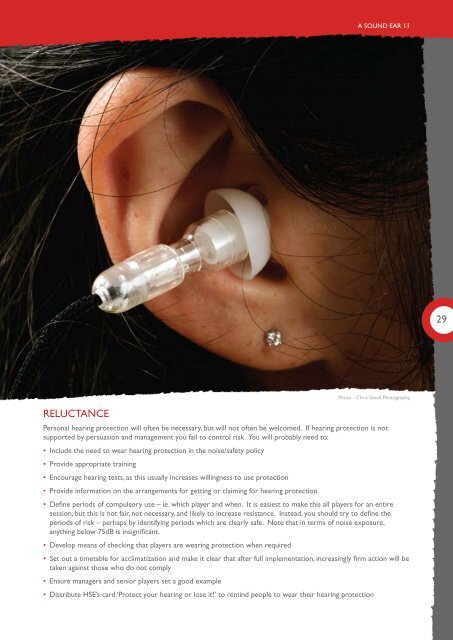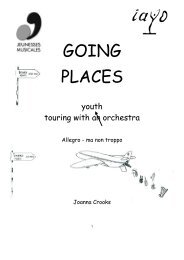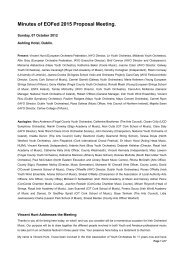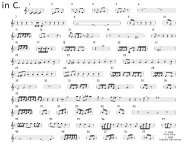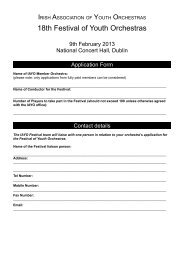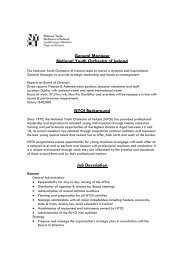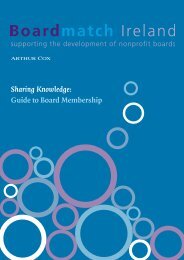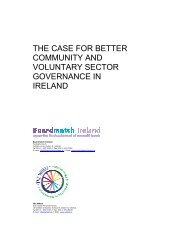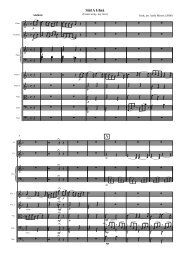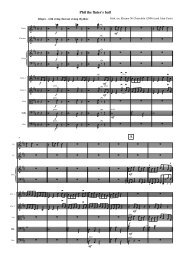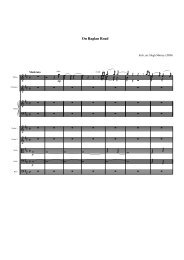A SOUND EAR II - Association of British Orchestras
A SOUND EAR II - Association of British Orchestras
A SOUND EAR II - Association of British Orchestras
Create successful ePaper yourself
Turn your PDF publications into a flip-book with our unique Google optimized e-Paper software.
A <strong>SOUND</strong> <strong>EAR</strong> <strong>II</strong><br />
29<br />
Reluctance<br />
Personal hearing protection will <strong>of</strong>ten be necessary, but will not <strong>of</strong>ten be welcomed. If hearing protection is not<br />
supported by persuasion and management you fail to control risk. You will probably need to:<br />
• Include the need to wear hearing protection in the noise/safety policy<br />
• Provide appropriate training<br />
• Encourage hearing tests, as this usually increases willingness to use protection<br />
• Provide information on the arrangements for getting or claiming for hearing protection<br />
• Define periods <strong>of</strong> compulsory use – ie. which player and when. It is easiest to make this all players for an entire<br />
session, but this is not fair, not necessary, and likely to increase resistance. Instead, you should try to define the<br />
periods <strong>of</strong> risk – perhaps by identifying periods which are clearly safe. Note that in terms <strong>of</strong> noise exposure,<br />
anything below 75dB is insignificant.<br />
• Develop means <strong>of</strong> checking that players are wearing protection when required<br />
• Set out a timetable for acclimatization and make it clear that after full implementation, increasingly firm action will be<br />
taken against those who do not comply<br />
• Ensure managers and senior players set a good example<br />
• Distribute HSE’s card ‘Protect your hearing or lose it!’ to remind people to wear their hearing protection<br />
Photo - Chris Stock Photography


